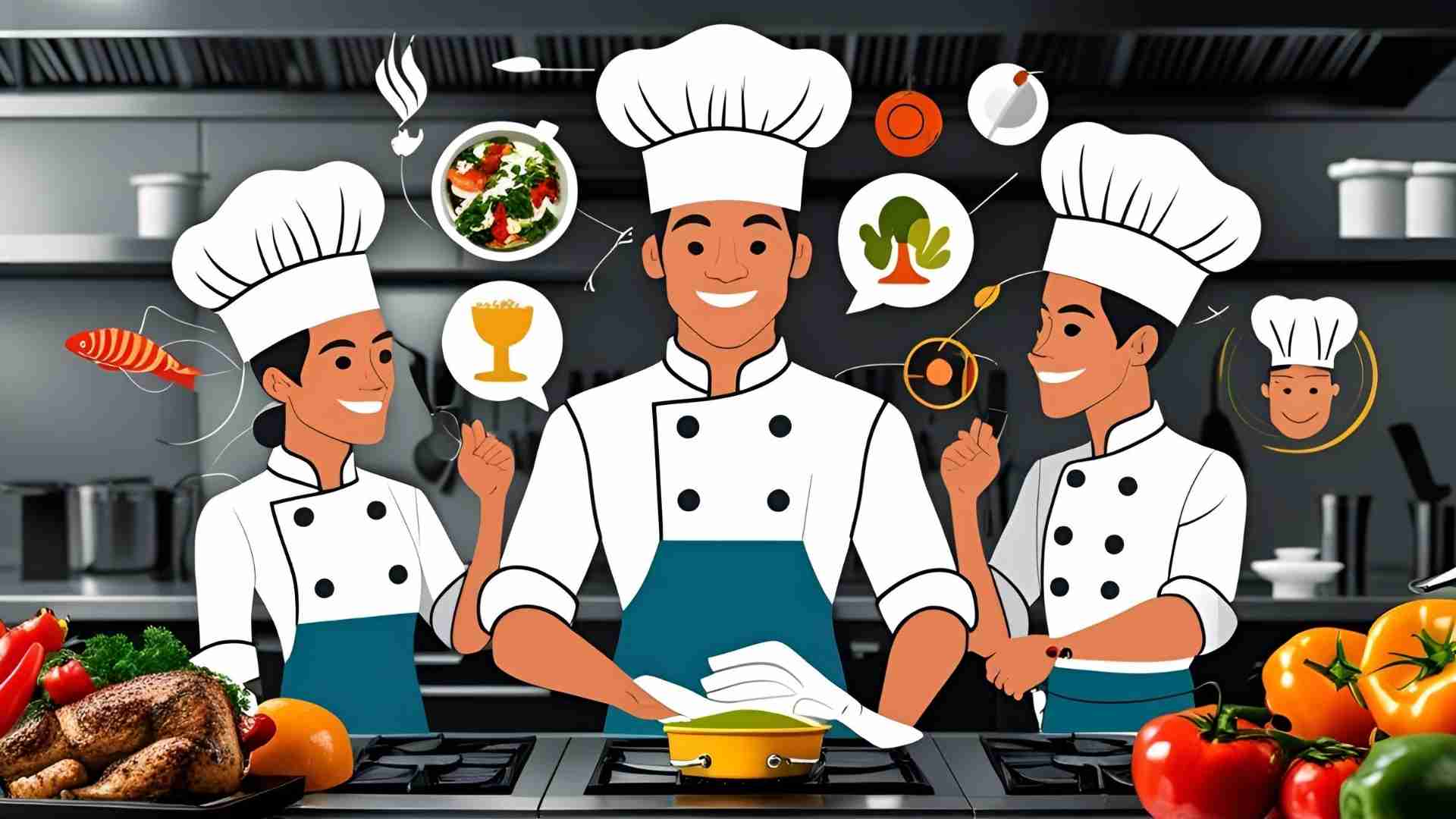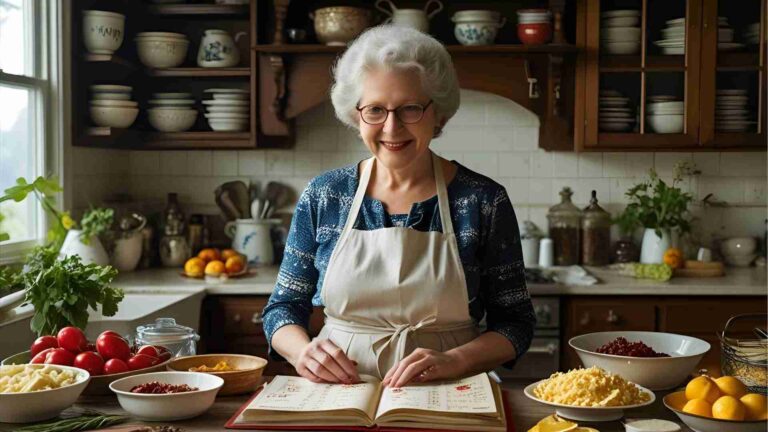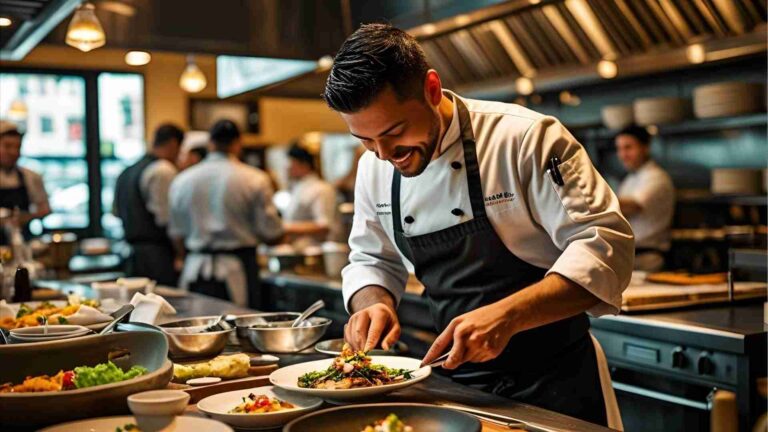Marketing Strategies for Professional Chefs
Discover effective marketing strategies for professional chefs to build a strong brand, engage audiences, and grow a loyal customer base.
The culinary world is as competitive as it is creative. For professional chefs, mastering the art of cooking is only half the battle—marketing yourself effectively is equally critical to stand out in a crowded field. Whether you’re a private chef, a restaurant owner, or an aspiring influencer chef, strategic marketing can elevate your brand, attract clients, and foster a loyal customer base. This comprehensive guide explores proven marketing strategies tailored for chefs, focusing on leveraging digital platforms, community engagement, and customer experience to amplify your culinary presence.
1. Harnessing the Power of Social Media Marketing
Social media is a chef’s stage to showcase their culinary creations to a global audience. Platforms like Instagram, TikTok, and YouTube offer visual mediums to display your skills, connect with food enthusiasts, and build a community around your brand.
Choosing the Right Platforms
Each social media platform serves a unique purpose and audience. Selecting the right ones depends on your content style and target demographic.
- Instagram: Ideal for high-quality images, short reels, and live videos, Instagram is a favorite among chefs for its visual appeal. With 71% of its users aged 18–29, it’s perfect for reaching younger foodies. Features like Instagram Stories and Reels allow for quick, engaging content that can go viral.
- TikTok: Known for short, engaging videos, TikTok appeals to a younger audience with its 15–60-second format. Chefs can share quick recipes, cooking tips, or behind-the-scenes content to capitalize on trending challenges. TikTok’s algorithm favors creative, authentic content, making it a powerful tool for organic reach.
- YouTube: Best for long-form content, YouTube caters to audiences seeking in-depth tutorials or storytelling. Its diverse demographic (18–65+) makes it versatile for chefs aiming to showcase detailed recipes or culinary journeys. Monetization through ads is possible after reaching 4,000 watch hours.
Table 1: Social Media Platforms for Chefs
| Platform | Content Type | Primary Demographic | Monetization Options |
|---|---|---|---|
| Images, Reels, Stories | 18–29 | Shop fronts, ads, collabs | |
| TikTok | Short videos (15–60 sec) | 16–24 | Ads, Creativity Program, collabs |
| YouTube | Long-form videos | 18–65+ | Ad revenue, sponsorships |
Crafting Engaging Content
To capture attention, focus on high-quality visuals and storytelling. Share:
- Signature Dishes: Highlight your best recipes with vibrant photos or videos.
- Behind-the-Scenes: Show the creative process, from sourcing ingredients to plating.
- Customer Stories: Feature testimonials or dining experiences to build trust.
- Educational Content: Share cooking tips or techniques to position yourself as an expert.
Engaging with Your Audience
Interaction is key to building a loyal following. Respond to comments, answer direct messages, and engage with followers’ content to foster a sense of community. Hosting live Q&A sessions or cooking demos can deepen connections and keep your audience invested.
Leveraging Paid Ads
Social media ads can expand your reach beyond organic growth. Platforms like Instagram and TikTok offer targeted advertising options to reach specific demographics, such as local foodies or event planners. Start with small budgets to test ad performance, focusing on visually compelling ads that showcase your signature dishes or services.
2. Building a Robust Online Presence
A strong online presence extends beyond social media to include a professional website, search engine optimization (SEO), and integrations with booking or delivery platforms. Your digital footprint is often the first impression potential clients have of your brand.
Creating a Professional Website
A website serves as your digital portfolio, showcasing your culinary expertise and personality. Use platforms like WordPress, Wix, or Squarespace for user-friendly website creation. WordPress, powering 43.1% of websites globally, offers customizable themes tailored for food professionals.
Key Website Elements:
- Compelling Bio: Craft a bio that reflects your culinary journey, expertise, and personality. Include credentials like formal education, restaurant experience, or awards to build credibility. Ensure the tone aligns with your brand—whether it’s approachable, professional, or innovative.
- Signature Dishes: Display a curated selection of recipes with high-quality images and detailed descriptions. Tools like WP Recipe Maker can format recipes with features like adjustable serving sizes and nutrition labels.
- Contact Information: Provide multiple contact options, such as email, social media links, or an online form. Clearly state preferred communication methods for bookings or collaborations.
- Testimonials: Feature client reviews to build trust and showcase your reputation.
Optimizing for Search Engines
SEO ensures your website ranks high on Google, attracting organic traffic. Use keywords like “private chef [your city],” “culinary services,” or “chef for hire” in your content. Optimize meta descriptions, headers, and image alt text to improve discoverability. Regularly update your blog with fresh content to maintain relevance.
Integrating Online Booking and Delivery
Streamline customer interactions with online booking systems for events or private dining. Platforms like OpenTable or Resy simplify reservations, while partnerships with delivery services like Uber Eats or DoorDash expand your reach to customers seeking convenience.
Chart: Website Structure for Chefs
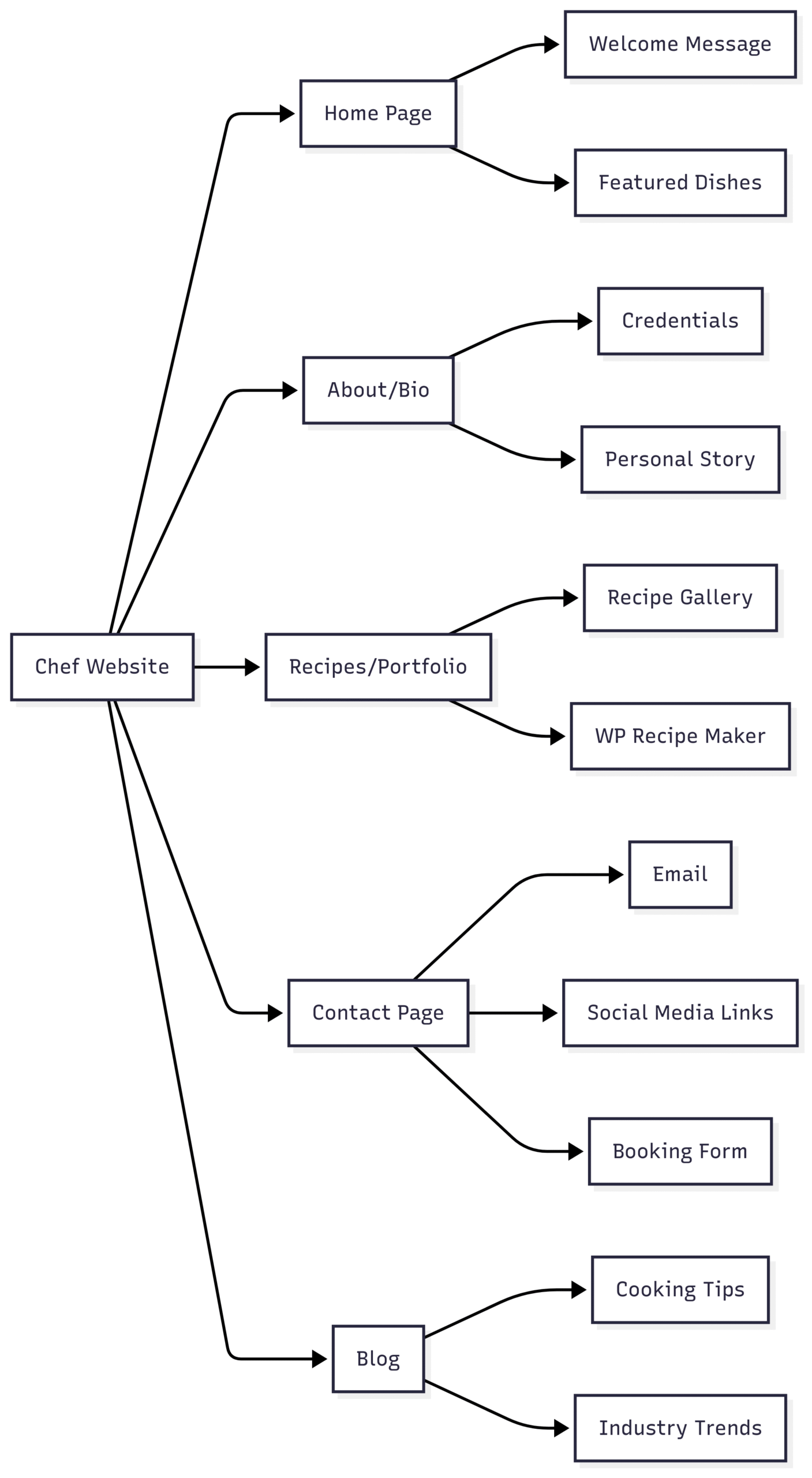
3. Engaging with the Local Community
Building relationships within your local community can create loyal customers and generate word-of-mouth referrals. Community engagement establishes you as a trusted figure in the culinary scene.
Forming Local Partnerships
Collaborate with local businesses like wineries, farms, or restaurants for cross-promotional events. For example, partner with a winery for a food-and-wine pairing event or with a local farm to highlight fresh, seasonal ingredients. These partnerships enhance your credibility and expose you to new audiences.
Hosting Events
Organize cooking classes, tasting menus, or pop-up dining experiences to showcase your skills. Pop-up events, in particular, offer low-overhead opportunities to test new menus and attract attention. Promote these events on social media and your website to maximize attendance.
Community Involvement
Participate in local festivals, charity events, or farmers’ markets to connect with potential clients. Sponsoring a community event or offering free samples can create goodwill and strengthen your brand’s reputation.
Table 2: Community Engagement Ideas
| Activity | Benefits | Examples |
|---|---|---|
| Cooking Classes | Builds skills, engages audience | Virtual or in-person classes |
| Pop-Up Events | High sales, low overhead | Food truck or market stall |
| Local Partnerships | Expands reach, builds trust | Winery or farm collaborations |
| Community Events | Increases visibility, goodwill | Charity cook-offs |
4. Prioritizing Customer Experience
Exceptional customer experience sets you apart in a competitive industry. By focusing on personalization, loyalty, and feedback, you can turn one-time clients into lifelong fans.
Implementing Loyalty Programs
Reward repeat customers with discounts, exclusive menus, or priority bookings. For example, offer a free dessert after five visits or a special tasting menu for loyal clients. Digital loyalty apps like Punchh or Belly make tracking rewards seamless.
Offering Personalized Service
Customize menus based on client preferences, dietary needs, or special occasions. For private chefs, tailored packages for events like weddings or corporate dinners can enhance appeal. Exceptional service, such as remembering client preferences, builds lasting relationships.
Gathering Feedback
Use surveys or comment cards to collect customer feedback. Analyze responses to identify areas for improvement, such as menu variety or service speed. Respond to feedback promptly to show customers you value their input.
Encouraging Online Reviews
Positive reviews on platforms like Yelp or Google boost credibility. Encourage satisfied customers to leave reviews by including links on your website or follow-up emails. Respond to reviews—positive or negative—professionally to demonstrate commitment to quality.
5. Mastering Content Marketing
Content marketing establishes you as an authority while keeping your audience engaged. By sharing valuable content, you can attract new followers and retain existing ones.
Blogging for Engagement
Maintain a blog on your website to share recipes, cooking tips, or industry insights. For example, write about “Top 10 Seasonal Ingredients” or “How to Pair Wines with Your Dishes.” Regular blogging improves SEO and keeps your site fresh.
Creating Video Content
Videos are highly engaging and shareable. Produce recipe tutorials, kitchen tours, or storytelling videos about your culinary journey. Embed YouTube videos on your website using tools like WP Recipe Maker to enhance accessibility.
Partnering with Influencers
Collaborate with food bloggers or influencers to tap into their audiences. For example, invite a local food blogger to review your pop-up event or co-create a recipe video. These partnerships amplify your reach and lend credibility.
Chart: Content Marketing Workflow
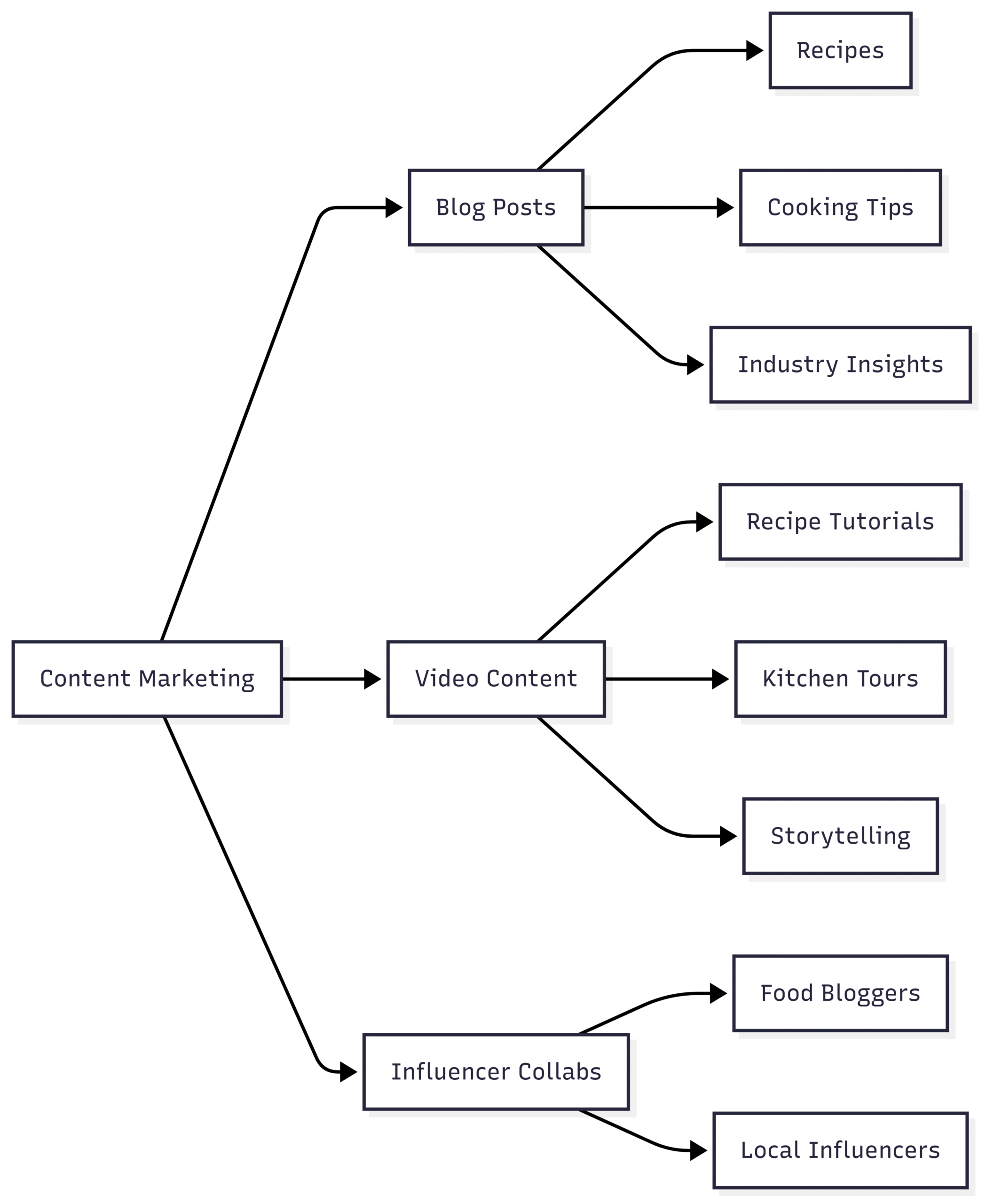
6. Strategic Brand Positioning and Networking
Your brand is your identity as a chef. A clear, consistent brand and strategic networking can set you apart in a saturated market.
Defining Your Brand
Identify your unique selling points (USPs), such as a signature cuisine, sustainable practices, or a vibrant personality. For example, if you specialize in fusion cuisine, emphasize this in your bio, recipes, and content. Consistency across platforms reinforces your brand identity.
Networking at Industry Events
Attend food festivals, culinary expos, or chef conferences to connect with peers, brands, and potential clients. Bring
Please share these Marketing Strategies for Professional Chefs with your friends and do a comment below about your feedback.
We will meet you on next article.
Until you can read, The Best Camera Angles for Food Photography
